4 European Events Harmonizing Art, Nature, and Techno Music
Techno and electronic music have always shared an intimate relationship with art, intertwining rhythms, beats, and melodies with visual expressions...
Celia Leiva Otto 30 May 2024
June was chosen as the Month of Pride to commemorate riots in the neighborhood of Greenwich Village, Manhattan, NYC, which were a response to a police raid that took place on June 28, 1969. This upheaval is considered one of the most decisive events leading to the formation of the gay liberation movement in the United States. In order to mark its anniversary, I want to share with you paintings with the most recognizable symbol of the LGBTQ+ movement, the rainbow.
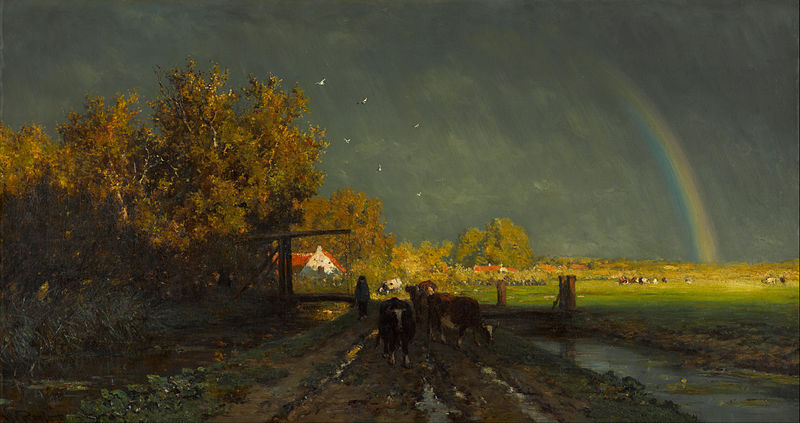
To start well, I’d like to share a little gem of a poem by William Wordsworth, called The Rainbow:
My heart leaps up when I behold
A rainbow in the sky.
So was it when my life began;
So is it now I am a man;
So be it when I shall grow old,
Or let me die!
The child is father of the man;
And I could wish my days to be
Bound each to each by natural piety.
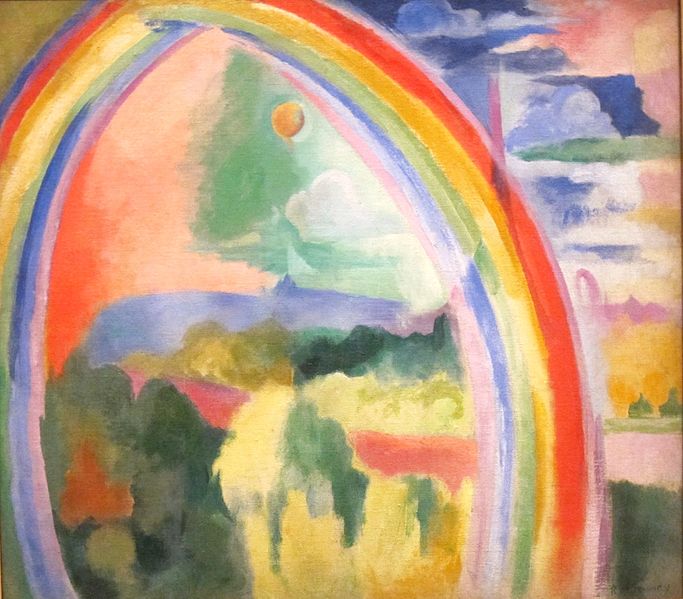


The LGBTQ+ rainbow flag was designed by Gilbert Baker, a San Francisco-based artist in 1978. Baker may have been inspired by the Stonewall Riots or by Judy Garland’s song Over the Rainbow (she was one of the first gay icons and died a couple of days before the riots).
Others suggest that the flag might have originated at college campuses as early as the 1960s when students demonstrated for world peace by carrying flags with five horizontal stripes. Baker was asked by California’s first openly gay elected official, Harvey Milk, to come up with the design in 1977, which would later be first presented as the gay pride flag at the San Francisco Gay Freedom Day Parade in June 1978.






In paintings, the rainbow assumes various symbolic functions. Here, for example, John Everett Millais includes it to emphasize the misery of a blind beggar-girl. While her sister can enjoy the magnificent double-rainbow view, the girl can solely enjoy the sun rays touching the surface of her face.
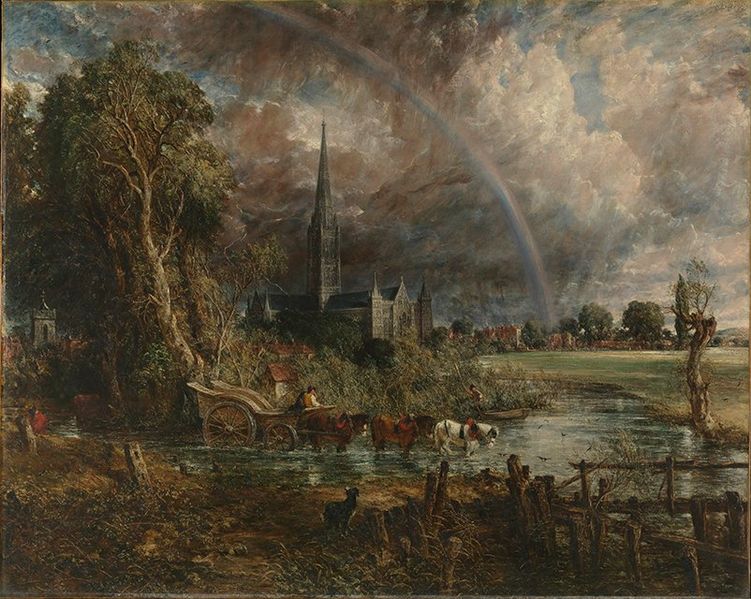


Here, instead, John Constable inserted a rainbow for an exercise on the rendering of light. But it also adds splendor to the idyllic scene, doesn’t it?
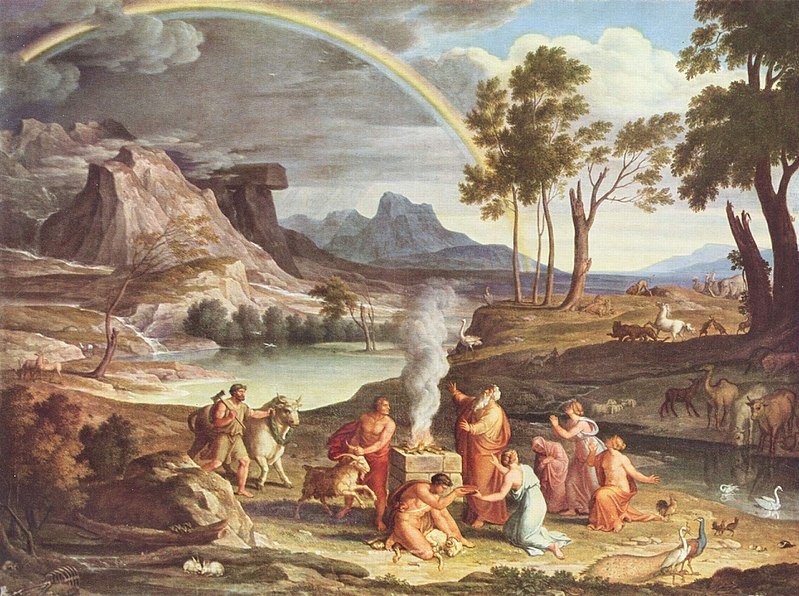


Many religious paintings use a rainbow as described in the Bible, the sign of God’s covenant with humanity from Genesis 9:16:
Whenever the rainbow appears in the clouds, I will see it and remember the everlasting covenant between God and all living creatures of every kind on the earth.
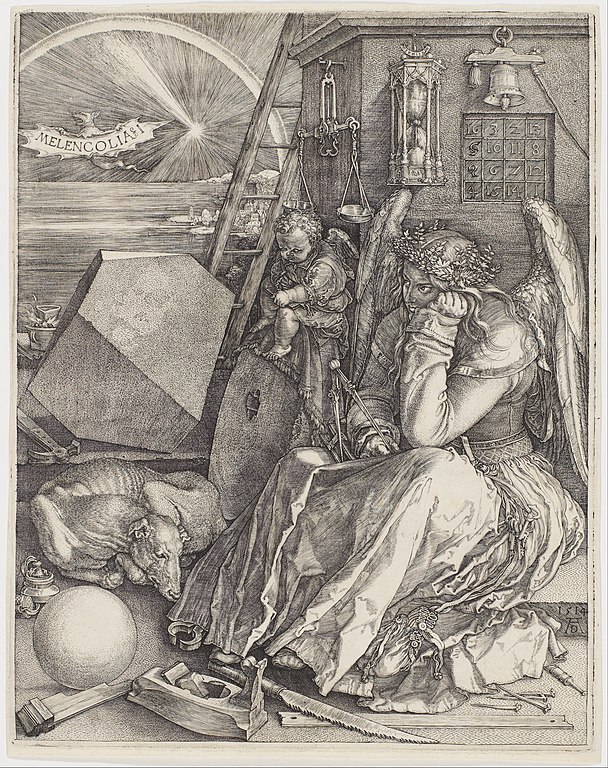


Is it day, or is it night? Some critics argue that it’s night and that the arc is not in fact a rainbow, but a moonbow. We don’t know exactly, since we cannot really specify what we see in the sky: is it a comet, a star, a planet, or the rising sun?
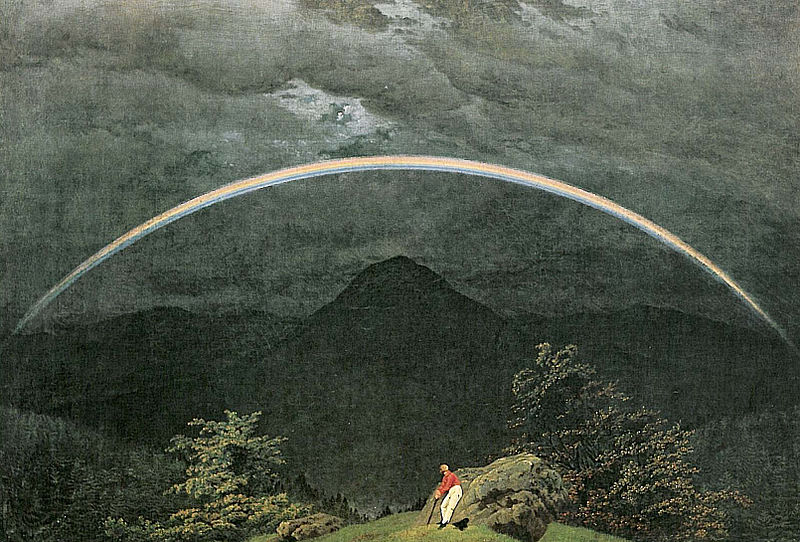


In 1809, Caspar David Friedrich traveled through Germany and along the Baltic Sea, and this painting is probably the fruit of one of his trips. As typical for a Romantic painter, Friedrich depicted opposites here: the sunlight highlights the figure of the wayfarer who stopped for a moment to admire the rainbow, which is a link between the darkness of the mountains and the light of the sky behind us.
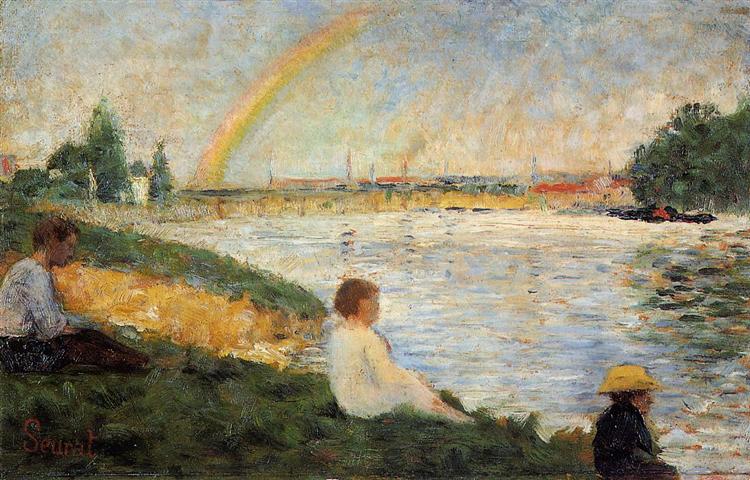


This rainbow painting was produced by Georges Seurat as just one of the studies of the famous Bathers at Asnières, which he finalized a year later. Although it’s treated as a preparatory painting, it can be considered work on its own, as it’s very close to the finished painting.
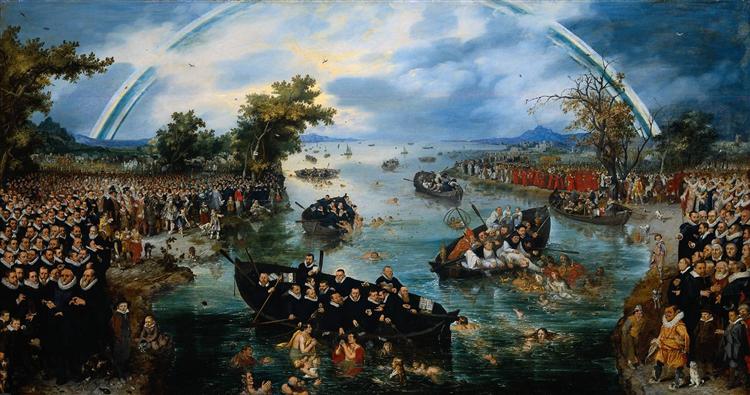


In the 17th century Netherlands (and Europe in general) politics and religion were inextricably bound up and painting served as a propaganda tool. Here we see how De Venne illustrates the two sides of the conflict in the Netherlands: Protestant ministers and leaders of the Republic (The North) are on the left, and on the opposite side we see the archdukes who governed the South, surrounded by countless Catholic clergymen. We see that staying on the left with the Protestants pays off: the sun shines there, the trees are greener, and their boats seem to be way more solid.
What about you? Do you have your favorite rainbow painting? Let us know in the comments!
DailyArt Magazine needs your support. Every contribution, however big or small, is very valuable for our future. Thanks to it, we will be able to sustain and grow the Magazine. Thank you for your help!